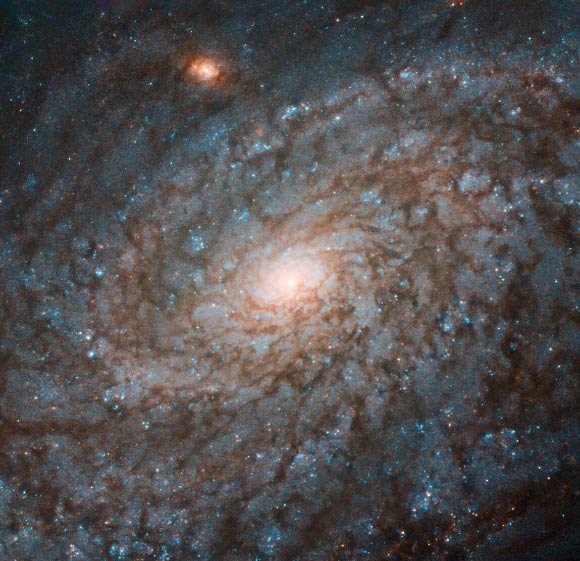Hubble Spots Flocculent Spiral Galaxy: NGC 4237 | Astronomy – Sci-News.com
The NASA/ESA Hubble Space Telescope has produced a spectacularly detailed image of the central region of the spiral galaxy NGC 4237.

This Hubble image shows the flocculent spiral galaxy NGC 4237. The image is made up of observations from Hubble’s Wide Field Camera 3 (WFC3) instrument in the infrared and optical parts of the spectrum. Three filters were used to sample various wavelengths. The color results from assigning different hues to each monochromatic image associated with an individual filter. Image credit: NASA / ESA / Hubble / P. Erwin et al.
NGC 4237 is located approximately 60 million light-years away in the constellation Coma Berenices.
Discovered by the German-born British astronomer William Herschel on December 30, 1783, this galaxy has a diameter of 50,100 light-years.
NGC 4237 is a member of the Virgo Cluster, a group of more than 2,000 galaxies.
Also known as LEDA 39393, UGC 7315 and VCC 226, it is classified as a flocculent spiral galaxy.
“This means that its spiral arms are not clearly distinguishable from each other, as in grand design spiral galaxies, but are instead patchy and discontinuous,” Hubble astronomers said.
“This gives the galaxy a fluffy appearance, somewhat resembling cotton wool.”
The researchers were actually more interested in NGC 4237’s bulge — the galaxy’s bright central region.
“By learning more about these bulges, we can explore how spiral galaxies have evolved, and study the growth of the supermassive black holes that lurk at the centers of most spirals,” the astronomers explained.
“There are indications that the mass of the black hole at the center of a galaxy is related to the mass of its bulge.”
“However, this connection is still uncertain, and why these two components should be so strongly correlated is still a mystery — one that we hope to solve by studying galaxies in the nearby Universe, such as NGC 4237.”





